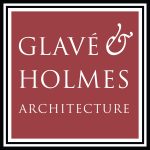Webinars
Scroll down to watch all of our past webinars for FREE, or use the buttons to the right view webinars by series.
If you’d like to support educational content such as this, please consider making a donation or becoming a member.
Past Webinars
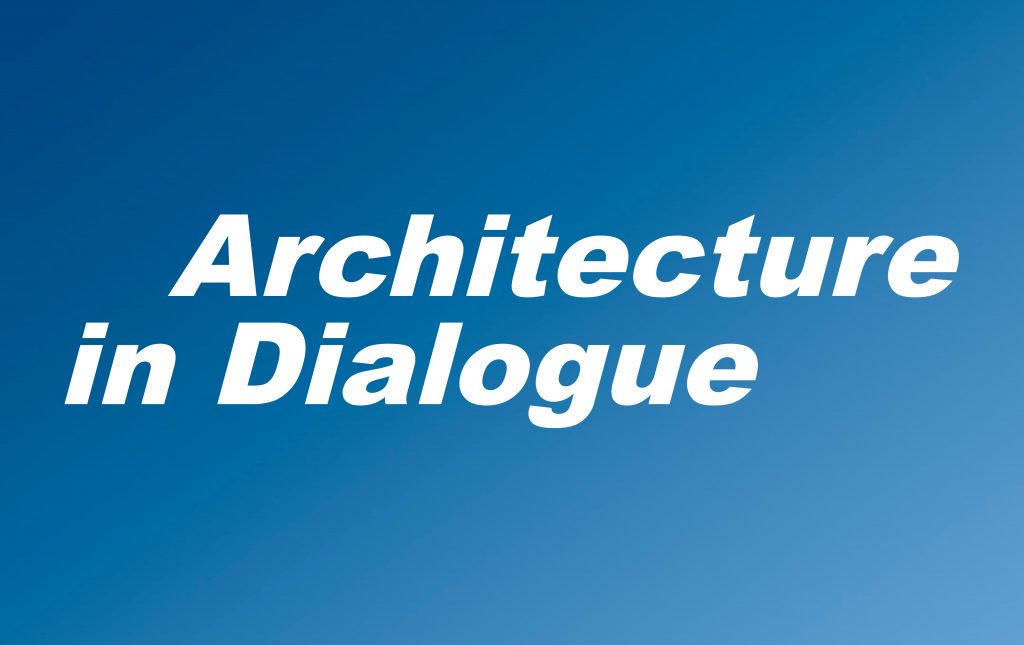
Architecture and design must begin in dialogue. The consideration of multiple issues and the inclusion of all voices is necessary to ensure that the built environment truly serves and uplifts the entire community. This need for input and involvement is especially important at a time when, whether through shifts in social norms or more sudden upheaval due to climate or disease, the built environment must change to be at once resilient and sensitive.
Hosted by The Branch Museum of Architecture and Design, this webinar series examines several topics that underscore the importance of this dialogue. Panels for each webinar include individuals from a variety of fields to engage with these challenging topics from the perspective of their discipline and experience. There will be opportunities for attendees to comment and ask questions.
Explore the intricate details of the Beth Ahabah synagogue over time. Speakers address the sanctuary windows, proscenium arch, and dome ceiling to highlight restoration over 150 years. In addition, the event will showcase how local preservationists and craftspeople repair and restore.
Speakers
Rabbi Scott Nagel, Rabbi at congregation Beth Ahabah
Bill Obrochta, Executive Director for Beth Ahabah Museum & Archives
Jay Woodburn, AIA, LEED AP, Principal Architect at Baservil
Rick Holtz, H. J. Holtz & Son, Inc.
This webinar follows speakers through critical design and construction stages of the Beth Ahabah Campus: from pre-design to building permitting and construction. In doing so, the discussion will underscore preserving distinctive historical character in tandem with a tedious design review process. Participants will discover the architectural design and review of a contemporary building in a historic neighborhood.
Speakers
Cyane Crump, Executive Director for Historic Richmond
Larry Salzman, Salzman Real Estate Services
Salo Levinas, Principal Architect at Shinberg.Levinas
The outbreak of COVID-19 quickly revealed how the design of hospitals, schools, offices, public spaces, and even entire cities were flawed in preventing the spread of the virus. How can architects, interior designers, and urban planners apply the lessons learned during the pandemic in rethinking the built environment? In this webinar, panelists will explore the potential implications of the COVID-19 pandemic on building design and urban planning.
Speakers:
Laura Hild, Principal and Regional Director of Health Interiors, HKS Architects
Alykhan Mohamed, Urban Planner, Sasaki (Boston)
Maritza Pechin, AICP, Strategic Planner, AECOM
During the 20th century, local and federal officials reinforced racial segregation through a number of policies and practices in Richmond. Though these are no longer legal, the implications of these actions were profound: Neighborhoods once deemed “hazardous” because of their racial makeup are still predominantly black and brown and are areas of higher poverty. They are also the neighborhoods most vulnerable to climate change, affected by higher temperatures and flooding more acutely than wealthier, whiter parts of the city. Panelists in this webinar will examine the relationships between 20th century urban policy, racial inequality, and climate change in Richmond, and what we can do about it now.
Speakers
Dr. Jeremy Hoffman, Chief Scientist, Science Museum of Virginia
Kendra Norrell, Community Engagement Coordinator, City of Richmond Office of Sustainability
Richmond’s East End consists of the city’s oldest neighborhoods, as well as some of its most under-resourced. A multi-partner revitalization initiative seeks to address the issues of poverty, social justice, and access to healthy food, education, and opportunity that have impacted the area for decades. In this webinar, panelists will discuss how these community needs led to the recent completion of one part of the initiative, The Kitchens at Reynolds.
Panelists
Steven Markel, Chairman of the Board of Directors, Markel Corporation
Chris McVoy, Principal, O’Neill McVoy Architects
Beth O’Neill, Principal, O’Neill McVoy Architects
Dr. Paula P. Pando, President of Reynolds Community College
What happens when a building or space outlives its purpose? Adaptive reuse refers to the process of converting a part of the built environment into something different than what it was originally designed. In this webinar, panelists will explore the many benefits, as well as challenges, of adaptive reuse in the Commonwealth of Virginia.
Speakers
Susan Reed, AIA, Director of Historic Preservation, Glave & Holmes
Jacob Sherry, AIA, Architect and Project Manager, 510 Architects
Joseph F. Yates, Principal, Joseph F. Yates Architects
How do we create places that are meaningful and inclusive in a community? In light of the recent removal of several Confederate statues on Monument Avenue, these newly vacated public spaces have been, or will need to be, reimagined and remade into places that reflect Richmond’s values. This webinar brings together several subject matter experts and stakeholders who will examine the concept of placemaking and its relevance on Richmond’s “Grand Avenue.”
Speakers
Nick Cooper, Principal and Design Director, HKS Architects and AIA Richmond President
Sam Daniel, Daniel & Company and member of the Monument Avenue Preservation Society
Zena Howard, FAIA, Principal and Managing Director, Perkins&Will (North Carolina)
Burt Pinnock, FAIA, Principal and Chairman, Baskervill Architecture and Planning
Noah Simblist, Associate Professor and Chair of Painting and Printmaking, Virginia Commonwealth University

Hidden Histories directs attention to stories, communities, and architectural conditions of the past to shed light on the present. Although history is sometimes hidden in plain sight, not everyone knows the full narrative behind the land and buildings we occupy in the present day. This series is a collaborative project that aims to complicate critical investigations in architecture and design that center people in power by adding different perspectives and research. In response to the notion that “history is written by the victors,” Hidden Histories proves that history can be rewritten and refined to include the struggles and experiences of all communities contributing to the cultural landscape of Virginia.
Menokin, the home of Francis Lightfoot Lee, has stood in ruins since the late 1960s. The Menokin Foundation has taken up the challenge of interpreting the “hidden histories” of the house, the people, and the land that once formed part of this plantation estate. This process includes the Glass House Project, a revolutionary treatment plan to stabilize the remaining house structure. Join Sam McKelvey, Executive Director of Menokin, and Jorge Silvetti, Principal at Machado Silvetti and lead designer of the Glass House Project and The Menokin Master Plan, as they describe “the most engaging preservation project in America.”
Speakers
Sam McKelvey, Executive Director, Menokin Foundation
Jorge Silvetti, Principal at Machado Silvetti
The Harriet Tubman Underground Railroad Visitor Center embodies freedom for countless enslaved individuals traveling from south to north. GWWO Architect’s design aims to describe and materialize nineteenth-century political conditions for visitors interested in truth and storytelling in the United States. As a pioneer, Harriet Tubman catalyzed a resistance movement that reflects a unique visitor experience, building, and landscape. To underscore a crucial place along the underground railroad, lead designers use architecture to draw connections between guests and Tubman’s life and legacy. In this webinar, GWWO Architects will showcase a farmstead vernacular that establishes framed views of liberation and enslavement, north and south.
Speakers
Alan Reed, GWWO Design Principal, FAIA, LEED AP
Chris Elcock, GWWO Associate Principal & Project Manager, AIA, IIDA, LEED AP
Dana Paterra, Park Manager, Harriet Tubman Underground Railroad State Park & Visitor Center
Diamond, Wilson and Ripple discuss work related to scholarship published in the article “Constructing Health: Representations of Health and Housing in Charlottesville’s Urban Renewals,” in the Journal of Architectural Education. This article examines the co-construction of urban health and blight through architectural representation during urban renewal, exploring how building imagery was used to convey social and epidemiological diagnoses, producing racial othering through depictions of space. We argue that racialized image-making practices used by designers and planners perpetuated inequities that urban renewal policy purported to reconcile while masking the true generating dynamics of white neglect and wealth extraction. Each of the authors will use the content of the article as a way to introduce their broader research agendas, and implications of this work for current building and planning practices.
Speakers
Jeana Ripple, Associate Professor, UVA School of Architecture
Barbara Brown Wilson, Associate Professor, UVA School of Architecture
Alissa Ujie Diamond, Landscape Architect

The Branch will conduct an ongoing dialogue with many of the artists we work with, exploring their art and getting a very personal view into their work. Some of our artists have been creating art for many years. Others are just on the cusp of what promises to be a long and productive career. Each has a unique perspective and approach which we will explore in these webinars.
In this lecture, furnituremaker Michael Puryear describes his journey synthesizing various parts of art, culture, philosophy, community, and identity into beautiful studio furniture. Puryear will share his personal and professional experiences that culminate in his work and openness towards the art of making. Please join The Branch Museum in welcoming Puryear to discuss the many intersections in his creative space.
Speaker
Michael Puryear, furnituremaker and educator
“Helper” is an installation constructed of locally sourced and reused wood located in front of the Branch Museum of Architecture and Design on Monument Avenue. In this webinar, An Liu will discuss the research, design, and construction of a purposely prickly installation to explore the relationship between individuals and their environment. An’s design philosophy is a nod to renowned architect Louis Kahn, who famously imagined a conversation with one material, asking, “What do you want, brick?” Instead, An asked, “What do you want, stick?” The use of sticks recreates an essential experience that draws occupants’ attention upward to both nature and time. Further, the design’s intention forces occupants to address wasted materials by highlighting human’s impact on the natural world. Occupants cannot disregard the sharp ends of the abandoned materials used and, thus, must acknowledge the lifecycle of wood. The sticks point to countless places that resonate with visitors. This webinar dives into equity, sustainability, site studies, scale, and climate change through an inventive irritative process.
Speakers
An “Sledge” Liu, Interior Designer, SMBW Architects
Spencer Grice, Principal Architect at SMBW
Join us for a talk with Charles Duff, author of the book The North Atlantic Cities. Richmond is a part of a family of cities in the North Atlantic including Amsterdam and London. These places started as cities of row houses, unlike the apartment house cities of Continental Europe and the suburban areas of Continental North America. Charles Duff will show how these cities came to be, how they grew and evolved, how they have overcome crises, and where Richmond fits into the family.
Speaker
Charles Duff, planner, teacher, developer, and historian
Carl Zimring wrote Clean and White: A History of Environmental Racism in the United States to offer a historical lens to environmental racism in the United States while paying particular attention to race and hygiene. Zimring discloses a racial stereotype that describes White communities as clean and non-White communities as dirty. From the age of enslavement, a public health crisis of the early nineteenth century through the present day, ideas about race and waste have shaped where people live, where people have worked, and how American society manages waste. For instance, the United States leaves waste from its citizens in countries like Ghana because their environment is deemed less valuable. Zimring draws on historical evidence from politicians, scholars, sanitarians, novelists, and activists to reveal changing constructions of environmental racism.
Speaker
Carl Zimring, Author Clean and White: A History of Environmental Racism in the United State
Join us as we celebrate the beauty and mystery of ancient Egypt! Henry David Ayon, local architect and author of Egyptian Places, will share his commentary and stunning illustrations from his exploration of 12 ancient sacred sites, as well as his insights on the art of drawing and sketching by hand in the architectural profession.
Speaker
Henry Ayon, Author and Architect
In Feral Cities, Tristan Donovan researches beyond the urban surface to uncover the diversity of wildlife that we share our streets and homes with and profiles the brave and fascinating people who try to manage them. Donovan plans to encourage our audience to think of our cities as a part of nature. Feral Cities takes readers on a journey through streets and neighborhoods far more alive than we often realize, shows how animals are adjusting to urban living and asks what messages the wildlife in our metropolises have for us.
Speaker
Tristan Donovan, Author of “Feral Cities: Adventures with Animals in the Urban Jungle,” and “Replay: The History of Video Games”
Steven Rudin creates multilayered collage tableaux of imagined places. Rudin’s vast interiors and panoramic landscapes invite the viewer into a world of discovery and reflection. His work explores art as a place inside of all of us. In this webinar, Rudin will discuss his collage scenes in the context of Biophilic Design, an exciting concept that combines architecture and environmental psychology.
Speaker
Steven Rudin, Artist and Psychiatrist
Dream Cities is a thought-provoking field guide to our modern world. Graham dives into seminal urban landscapes and explores the original practices that shape cities around the world, from Dubai to Ulan Bator to London.
Speakers
Wade Graham, Author, Dream Cities: Seven Urban Ideas That Shape the World
Thomas Woltz, owner of award-winning landscape architecture firm Nelson Byrd Woltz, will join us for a discussion about his book Nelson Byrd Woltz: Garden, Park Community, Farm. Woltz will present a selection of twelve built projects representing the firm’s contemporary vision for sustainable design, demonstrating the remarkable breadth of their practice and inspiring a new understanding of how landscape architecture can shape our world through urbanism, agriculture, and conservation sciences.
The projects range from an urban townhouse garden to an animal-friendly habitat for the National Zoo’s giant pandas to a large-scale sheep-and-cattle station along the coast of New Zealand.
Speaker
Thomas Woltz, Author Nelson Byrd Woltz: Garden, Park Community, Farm and owner of Nelson Byrd Woltz Landscape Architects
Schilthuizen magnifies urban ecologies to offer readers an up-close look at how flexible and adaptable natural selection can be. The new conditions in our urban environments force wild animals and plants to adapt to challenging environmental conditions like a hotter climate or a divided habitat. Darwin Comes to Town underscores how wildlife and humans co-exist in harmony, particularly in rapid ways unimaginable by renowned biologist, Charles Darwin.
Speaker
Menno Schilthuizen, Author and “urban ecologist”

This webinar series offers an in-depth look at the restoration of The Branch House on Monument Avenue in Richmond, Virginia. Join us as we explore the history of the Branch House and the Branch family. Savor the opportunity to have a front row seat that allows you to see areas of the House that are not open to the public. Get a close-up look at the renovations that are underway on the roof, wood trim, decorative plaster, chimneys and pipes. Learn from some of Virginia’s best artisans, craftsmen, architects, architectural historians and Branch family members as you go on a five-part journey of exploration through the restoration of one of Richmond’s outstanding architectural treasures.
Brick has been a common building material in Virginia since the colonial era but the Branch House’s use of brick is unique. You will see up-close drone images of the ornamental brickwork and sculpture that is typically seen from the ground. You will learn about brick restoration techniques and considerations that are factored into historic brick buildings across Virginia, including the importance in selecting the right mortar. You will also learn about the changes in the brick industry during the period of the house’s construction, which transitioned from centuries old practices to contemporary construction. Brick may be a common building material but at the Branch it is uncommon restoration.
Speakers
Warren Davies, Virginia Masonry Restoration
Walter M. Dotts III, Trustee – Old House Authority, and great-grandson of John Kerr Branch and Beulah Gould Branch
Calder Loth, Architectural Historian
Moderator
Fred Esenwein, Ph.D., Glavé & Holmes Architecture
Chimney Restoration Time Lapse Video: https://youtu.be/4tyK3bp2pHY
The Branch House plumbing is remarkable in that so much of the original piping is still in use after 100 years but it is causing damage to the decorative plaster. Tracing the pipes has led to understanding how the house was built behind the surfaces you see. You will see various strategies in investigating behind the walls, spaces not normally seen by the public including the highest and lowest parts of the building, and some of the 1916 construction drawings from Pope’s office. You will learn about construction techniques that were novel in 1919 but are common today and things to consider when describing work to be done that you cannot see. Like a simple plumbing job today, what started as a seemingly mundane task escalated into a historical reimagining of the entire building and discovery of what was else needs to be done!
Speakers
Walter M. Dotts III, Trustee – Old House Authority, and great-grandson of John Kerr Branch and Beulah Gould Branch
Fred Esenwein, Ph.D., Glavé & Holmes Architecture
The Branch House decorative plaster is some of the most beautiful plasterwork in Virginia. Unfortunately, the century since the House was built and water intrusion have caused significant damage. You will see up-close views of the beautiful plaster figures and decorations, including the toll that time has taken on the plaster, and you will discover the history of plasterwork in the early 20th century, particularly in Richmond, as well as learn from a dedicated craftsman how this work is being saved at the Branch. The challenges of restoration are best shown in the work to save our decorative plaster.
Speaker
Walter M. Dotts III, Trustee – Old House Authority, and great-grandson of John Kerr Branch and Beulah Gould Branch
Rebekah Jamerson, Master Plasterer, All Things Plaster
Gibson Worsham, Glavé & Holmes Architecture, Architectural Historian
Moderator
Susan Reed, AIA, Director of Historic Preservation, Glavé & Holmes Architecture
Designed by John Russell Pope, the Branch House and Gardens occupy half a block in Richmond’s Fan District. This webinar will explore the history of the House and Monument Avenue, critical choices for the location of the House and the architect; the significant role the House and the Branch family have had in Richmond’s history. And we will begin to explore the challenges of restoring one of Richmond’s great architectural treasures.
Speakers
Walter M. Dotts III, Trustee – Old House Authority, and great-grandson of John Kerr Branch and Beulah Gould Branch
Sarah Driggs, Curator, Author, Editor
Penny Fletcher, Executive Director, The Branch House of Architecture and Design
Lena Sweeten McDonald, National/State Register Historian, Virginia Department of Historic Resource
Susan Reed, AIA, Director of Historic Preservation, Glavé & Holmes Architecture
Gibson Worsham, Glavé & Holmes Architecture, Architectural Historian
The roof and windows are defining features of the Branch House. The diamond patterned windows enhance the medieval character of the building, the exterior woodwork relied on skilled craftsman to make adjustments on-site like medieval carpenters, and the roof system is a series of pitches with slate and flat surfaces now with modern coatings. But these features are more than beautiful; they have to keep water out and their wear is showing. Our panel of experts will discuss the challenges of repairing building elements that pose the greatest risk to water infiltration that can either be highly visible or obscured.
Speaker
Sam Daniel, Daniel & Co.
Walter M. Dotts III, Trustee – Old House Authority, and great-grandson of John Kerr Branch and Beulah Gould Branch
Maurice Franck, Saunders Roofing
Moderator
Fred Esenwein, Ph.D., Glavé & Holmes
Thank You to Our Generous Series Sponsors
Architecture in Dialogue

AIA Continuing Education Partner

Aga Khan Council
Series Partner

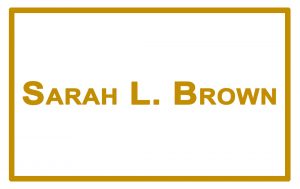
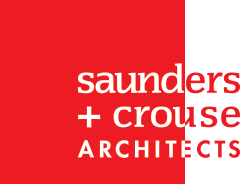
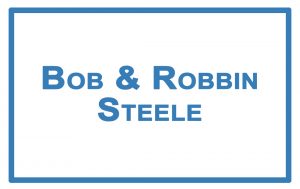
Dialogue with Artists and Authors

Hidden Histories

AIA Continuing Education Partner
The Branch House: Restoration for the Second Century


